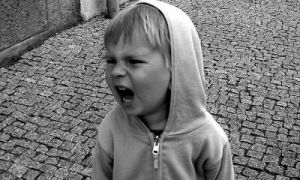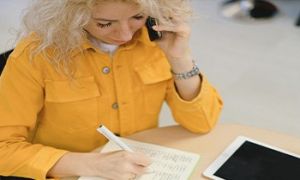Montessori stressed that children learn best by using their senses and pursuing their interests, rather than forcing them to learn what is expected.
Children have innate skills and talents. There are sensitive periods which indicate when the child is ready to learn.
About
Maria Tecla Artemisia Montessori (August 31, 1870 – May 6, 1952) was an Italian physician and educator best known for the philosophy of education that bears her name, and her writing on scientific pedagogy.
The Montessori Method
The Montessori Method is characterized by providing a prepared environment: tidy, pleasing in appearance, simple and real, where each element exists for a reason in order to help in the development of the child. The Montessori environment integrates children of mixed ages that are grouped in periods for 3 years. This promotes socialization, respect and solidarity among them naturally. The prepared environment offers the child opportunities to engage in interesting and freely chosen work, which brings out long periods of concentration that should not be interrupted. Freedom develops within clear limits, and this allows children to work in harmony with others in the small society they belong to within the environment. Children work with concrete materials that were scientifically designed, which provide enables them to explore our world and develop basic cognitive abilities. The adult is an observer and a guide. They help and stimulate the child with all their effort. This allows children to act, want and think by themselves and helps them to develop confidence and inner discipline.
The Montessori Environment
Maria Montessori pioneered the idea that an environment can be designed specifically to facilitate independent learning in children. She based this concept on her own careful observations and developed a framework of six core principles to guide the creation of a child-centred environment.
- Freedom - The prepared environment allows for freedom of movement; freedom of choice during independent work blocks; and freedom to either interact socially or take time to yourself. From the earliest levels of Montessori education, students are encouraged to develop agency and to seek out opportunities and resources. This freedom helps students develop positive relationships with “work,” which leads to motivated, independent learners.
- Structure and Order - This structure is very important to the development of a confident, reasonable learner. As the child internalizes the structure of the classroom around her, she realizes the rational, systematic outcomes of the natural world, as well. The student is able to make assumptions and rationalizations, and determine the truth and value of these things by navigating a structured environment. A chaotic environment can have a detrimental effect to developing reasoning skills and confidence, as these opportunities to develop detailed perceptions are fewer and more fragmented.
- Beauty - Natural lighting and oxygen-producing plants are parts of many classrooms, which speaks to the next principle of the prepared environment as well. Warm lighting, pastel colours, and soft materials are often seen in Montessori classrooms, creating a feeling of being at home, or at least, being in a comforting environment.
- Nature and Reality - Within the classroom, natural materials are used as much as possible. Dexterity work could involve grains of sand or kernels of corn; practical life work may involve preparing a snack with real kitchen utensils.
Both natural and real materials are used so that students can learn the relationships between these objects, and have confidence using them independently as they grow. It’s common to see children interacting with actual glass vases for their flower arranging work, or manipulating real fabrics and materials on the dressing frame or with the locking activity board. Students learn to utilize real fabric fasteners like zippers, buttons, and velcro; they also work with real metal locks and latches to learn the basics of mechanics and increase dexterity. - Social Environment - Students have the ability and freedom to interact with each other through work, rest, and play; the social and emotional frameworks of a Montessori education encourage students to approach each other with empathy and to work constructively through disagreements or differences.
- Intellectual Environment - students will develop their intellect as well as their personalities. This environment is full of materials and activities specific to each piece of the Montessori curriculum. Students understand that this is a place for learning, and they are comfortable developing their foundational skills (order, coordination, concentration, and independence) within this environment.
Montessori Materials
The Montessori materials are sensory-based learning tools that are designed to provide children with opportunities to discover learning through independent learning, repetition, and practice. They are presented to the child in sequence, from easiest to hardest, in accordance with their developmental needs and interests.
Within the Montessori environment, the Montessori materials are displayed within their specific Curriculum area, including Practical Life, Sensorial, Mathematics, Language, and Culture. Each material is displayed in progression order, from easiest to hardest, and from left to right. This logical structure encourages children to organise their thinking, progress logically through the Montessori program, and absorb the outcome of the material at their own pace. The left to right orientation of the Montessori materials also assists children with preparation for reading and writing, and the way that the brain naturally processes information.
In addition to teaching children concrete knowledge areas and skills, Montessori materials are also beneficial for building fine-motor skills in children.
What’s unique about Montessori learning materials?
- Control of error
- Purposeful activities using movement and exploration
- Materials isolate one concept or skill
- Aesthetic and engaging
- Hands-on experiential learning
- Simplify abstract concepts
- Develop fine motor skills
Practical Life
Practical Life activities are everyday life experiences that a child may observe adults complete in their daily routine. These activities give the child a sense of belonging as they gain knowledge to accomplish life skills in a purposeful way.
For more information, please read the following: Practical Life Activities
Montessori’s Theories in Practice
- Educators will ensure that there are blocks of uninterrupted time for playing.
- Children explore and use Montessori materials and equipment.
- Children are given hands-on learning opportunities.
- The program and environment will be ordered and the children will have the opportunity to be involved in the routine life of the service including meal preparation and cleaning.
- Encourage independence - let the child choose
- Be non-directive; the child will show you what they need
- Do not yell at the child for unintentional mistakes
- Educators should construct a child's learning environment
- Absorb learning through different experiences
To maximize children’s learning, Montessori believed that teachers should provide the necessary resources for children to learn independently, and intrude on the children’s learning experience as little as possible. If children are guided with love they will learn on their own.
References:
Maria Montessori, Wikipedia
Montessori Materials, Montessori Academy
The Montessori Method, Argentina Foundation Maria Montessori


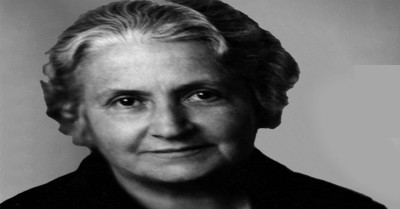
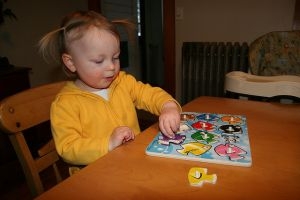 Toddlers have a greater understanding of the world around them by this stage. Their cognitive development (also known as intellectual development and thinking skills) continues
Toddlers have a greater understanding of the world around them by this stage. Their cognitive development (also known as intellectual development and thinking skills) continues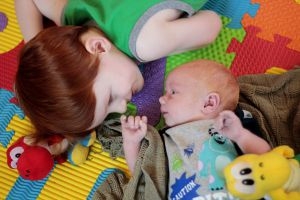 Infants begin to develop trust when parents begin to fulfil their needs. Such as changing an infant's nappy when needed, feeding on request and holding
Infants begin to develop trust when parents begin to fulfil their needs. Such as changing an infant's nappy when needed, feeding on request and holding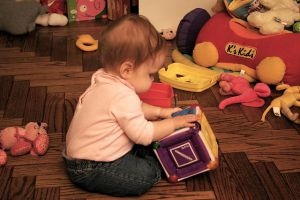 Beginning at birth the construction of thought processes, such as memory, problem solving, exploration of objects etc, is an important part of an infant’s cognitive
Beginning at birth the construction of thought processes, such as memory, problem solving, exploration of objects etc, is an important part of an infant’s cognitive Toddlers want to do more on their own and do not like it when you begin to establish limits on their behaviour. Tantrums can become
Toddlers want to do more on their own and do not like it when you begin to establish limits on their behaviour. Tantrums can become Your preschooler is now able to focus their attention more accurately and is less influenced by distractions. The intensity of questions increase as your child
Your preschooler is now able to focus their attention more accurately and is less influenced by distractions. The intensity of questions increase as your child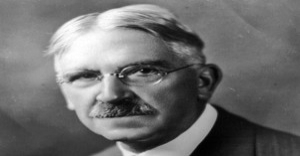 John Dewey is often seen as the proponent of learning by doing – rather than learning by passively receiving. He believed that each child was active,
John Dewey is often seen as the proponent of learning by doing – rather than learning by passively receiving. He believed that each child was active,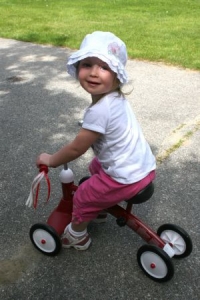 Toddler advance and gains new skills in Gross Motor Development milestones achieved throughout earlier years. Co-ordination and challenges that could not be performed before such
Toddler advance and gains new skills in Gross Motor Development milestones achieved throughout earlier years. Co-ordination and challenges that could not be performed before such Erik Erikson developed a psychosocial theory to understand how we each develop our identities through eight stages of psychosocial development from infancy to adulthood. The
Erik Erikson developed a psychosocial theory to understand how we each develop our identities through eight stages of psychosocial development from infancy to adulthood. The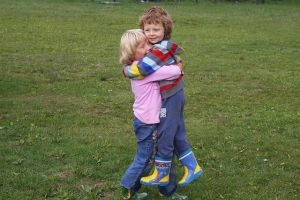 At this point preschoolers begin to interact effectively with others. Play becomes more innovative and organized and “boyfriend” or “girlfriend” begins to emerge. Preschoolers have
At this point preschoolers begin to interact effectively with others. Play becomes more innovative and organized and “boyfriend” or “girlfriend” begins to emerge. Preschoolers have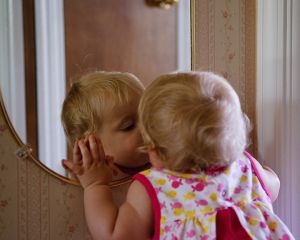 From now, babies begin to identify and respond to their own feelings, understanding other's feelings & needs and interact positively with others. A baby's social and
From now, babies begin to identify and respond to their own feelings, understanding other's feelings & needs and interact positively with others. A baby's social and